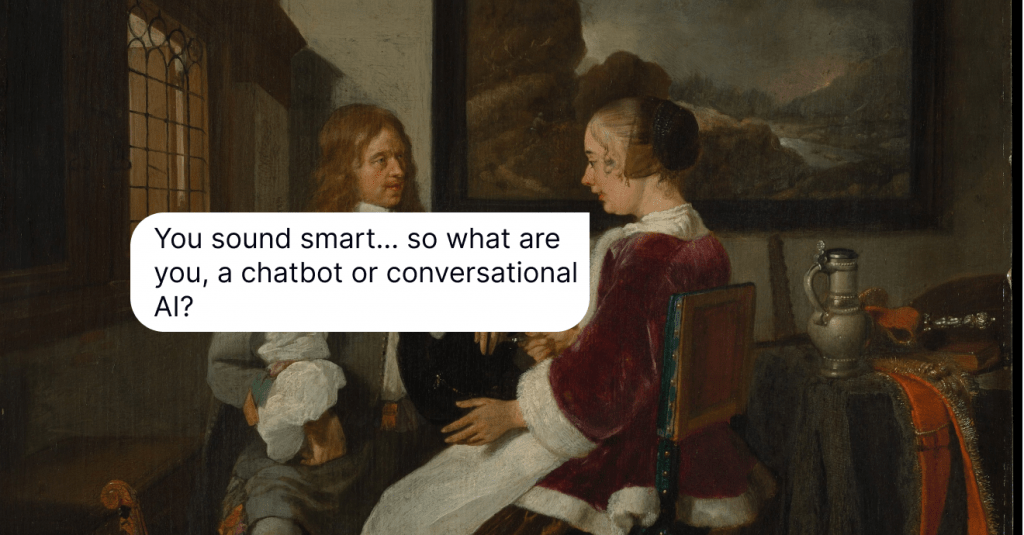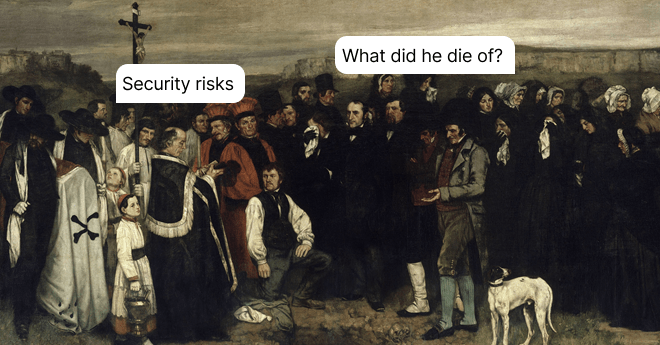How to Use ChatGPT for Customer Service: Best Practices and Prompts
Boost your customer service with ChatGPT and learn top-notch strategies and engaging prompts for outstanding support.
Written by Yaroslav Savchenko

Did you see the news that OpenAI has lifted some bans on military use of ChatGPT? Cool, right?
Anyway, thanks to ChatGPT, we’ve got a secret weapon ourselves, too. But more is needed than just a subscription for intelligent chatbots; wielding them to craft booming customer experiences is vital. Here, we’ll dive a bit into the art of using ChatGPT for customer service and learn some tips and prompts from troubleshooting to upsells.
Make your communications more efficient and pleasant with these best practices. Welcome to the new era of ChatGPT-powered customer service!
So, what is ChatGPT? What are its advantages and limitations?
Let’s start with the definition. ChatGPT is powered by neural nets online chatbot that can process human language and generate valuable texts at the request of a person. It can be anything: emails, social media posts, slogans, headlines. No wonder it’s causing such a buzz in the customer service industry.
Here’s the lowdown on why it’s becoming the go-to tool for businesses.
Benefits of using ChatGPT for customer service
Faster resolution times
Imagine your customers never having to twiddle their thumbs while waiting for you to compose relevant responses. ChatGPT is literally the tool for making content. Human customer service agents can use it to write messages or propose ideas for outreach emails.
For example, we at HelpCrunch integrated AI into our shared inbox and knowledge base, and it helps our Customer Success Managers craft the needed response and content, saving time and effort quickly. And we are actively working on integrating it with our chatbot.
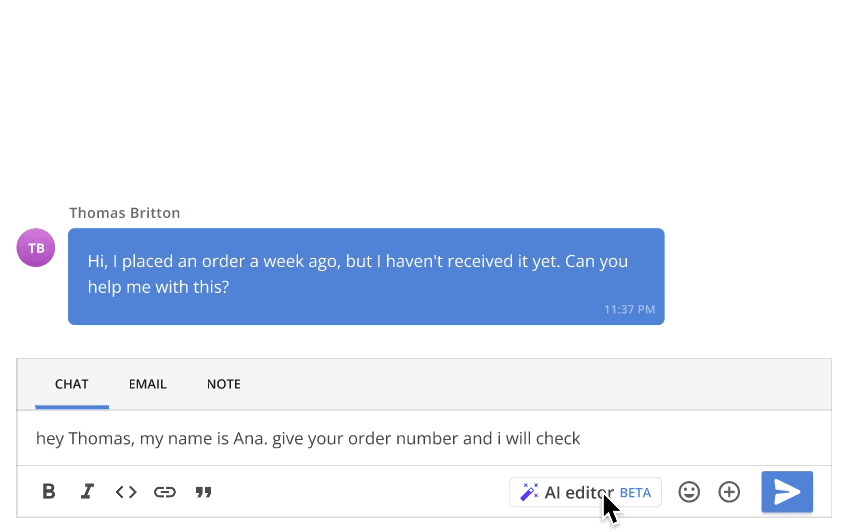
24/7 availability
Humans need sleep, weekends, and the occasional vacation. Conversational bots don’t. They never sleep and can take notes or even resolve some queries, giving clients much faster responses. People can reach out whenever, and the ChatGPT-based bot will assist them and answer up to 80% of common customer questions.
Moreover, this can lead to a 30% cut in spending on customer service labor.
Scalability: Growing with your business
ChatGPT scales effortlessly and thus can fit in any amount of queries as your customer base expands. You still need to hire and train people. But ChatGPT is a cost-effective solution to reduce the required human agents and speed up the scaling.
For example, ChatGPT is a pro at routine tasks like sorting issues. It has the capability to quickly identify urgent matters that need human intervention, ensuring customer service teams focus on what indeed requires their expertise. For example, here is how SkyLink Airlines uses AI to triage its customer inquiries through the WordPress editor.

ChatGPT becomes a powerhouse in optimizing customer service. It’s about solving issues swiftly, consistently, and at scale. But here is the spoiler: it’s, of course, not that super special.
What ChatGPT can’t do in customer service
While ChatGPT is a stellar addition to your arsenal, it’s not infallible. Here are some areas where it might struggle.

Limited to the input it receives
It’s like a really smart parrot. It generates text based on what it’s been taught or seen but doesn’t truly understand. If the input isn’t clear, it can lead to inaccurate responses to customer inquiries.
Potential for repetition or hallucinations
Sometimes, ChatGPT might get a bit carried away and repeat phrases or provide inconsistent answers. Also, it mostly makes up the facts about reality, especially regarding dates and numbers. It’s not intentional; it’s just the nature of machine learning models. Thus, if you want the chatbot conversation flow to be flawless, always double-check.
Not the best for complex inquiries
If a customer asks your AI-powered chatbot a highly technical question or has a complex issue, ChatGPT might try it, but it’s not the go-to for intricate problem-solving. A human touch is still required to maintain customer service standards, especially in highly specialized fields.
Lack of understanding of context
It’s not great at remembering the entire chat history, so grasping the background context might be challenging. For instance, it might lose track if a conversation takes unexpected turns. Or if your customer expressed frustration or humor, ChatGPT might not catch the emotional cues.
In a nutshell, ChatGPT is super, but it’s not a one-size-fits-all solution. It handles routine customer complaints and provides quick personalized responses, but the human touch is irreplaceable. So, use ChatGPT wisely.
5 best practices for using ChatGPT for customer service
Alright, let’s get down to business. This artificial intelligence marvel can boost your support, but finesse is critical, like any potent tool. Thus, here are some best practices to extract maximum value from ChatGPT for your customer service:
Iterate and train
Don’t anticipate perfection from the get-go. ChatGPT is a learning machine, and its AI chatbot features get better with time. If the initial results are not hitting the mark of human-like responses, iterate. Train ChatGPT with examples and refine your prompts over time. Consider it as coaching a rookie — improvement comes with practice and feedback.

And train your staff to get surgical on queries. The more precise and detailed your prompt, the more targeted and valuable the response. For instance, rather than tossing a vague question like “Help with my product,” try, “Can you guide me on troubleshooting my product’s connectivity issues?” But remember to always double-check the answer.
Set the right brand tone
ChatGPT is your generative AI agent. Guide it to align with your brand’s unique tone and style. If your brand is about friendliness and approachability, ensure your prompts reflect that. After all, it’s all about crafting an engaging and positive customer experience.
Making sense of support chats
AI chatbots really shine in making sense of those long customer messages thanks to natural language processing. They break down the info into bite-sized summaries, cutting out the extra stuff like signatures. They even whip up an internal note for human agents, making getting the client’s needs a breeze.
Whether in a chat or ticket, an intelligent bot can wrap up the whole convo before bringing in an agent. This means customer support teams get the lowdown and can give fast spot-on support when it’s time for the human touch. And that’s not all you get if you dare to automate customer service.
Making bot building accessible
Until now, creating customer service chatbots was a secret skill. But not anymore! Now, anyone can build an AI representative for their support. You just need:
- Well-written FAQs in text form.
- Connect to OpenAI’s ChatGPT with an API..
You can whip up a bot in minutes by linking your FAQ or help center to ChatGPT. Thanks to automation, you’ll speed up the process and save time and effort spent on looking for easy chatbot ideas, building it and training. If you are looking for a ready-to-use solution, check out the chatbot builder created by HelpCrunch, which will get AI integration soon.

Training new support agents
It’s actually a cool way to use generative AI tools in service: help customer service teams get on board faster. Connect ChatGPT to your internal knowledge base articles to create a helpful tool to answer all the questions your newbies throw at it. Also, looking at the most common questions and the bot’s responses helps you know where your training materials need a boost.
ChatGPT is a dynamic tool, not a magic wand. Adapt, train, and use proven prompts like the ones we want to share next.
Must-have ChatGPT prompts for customer service
So, you’ve got ChatGPT in your toolkit for customer service scenarios and are ready to make the best out of it. That’s the spirit! Now, you only need some of the prompts.
Greetings and introduction
Establishing the right tone for customer conversations. A generic greeting won’t cut it, and that’s where ChatGPT can help. This prompt sets the stage for a positive interaction right from the beginning.
Prompt Example: Create a warm and welcoming greeting for a customer who joined the chat. Introduce yourself and ask how you can assist them today.
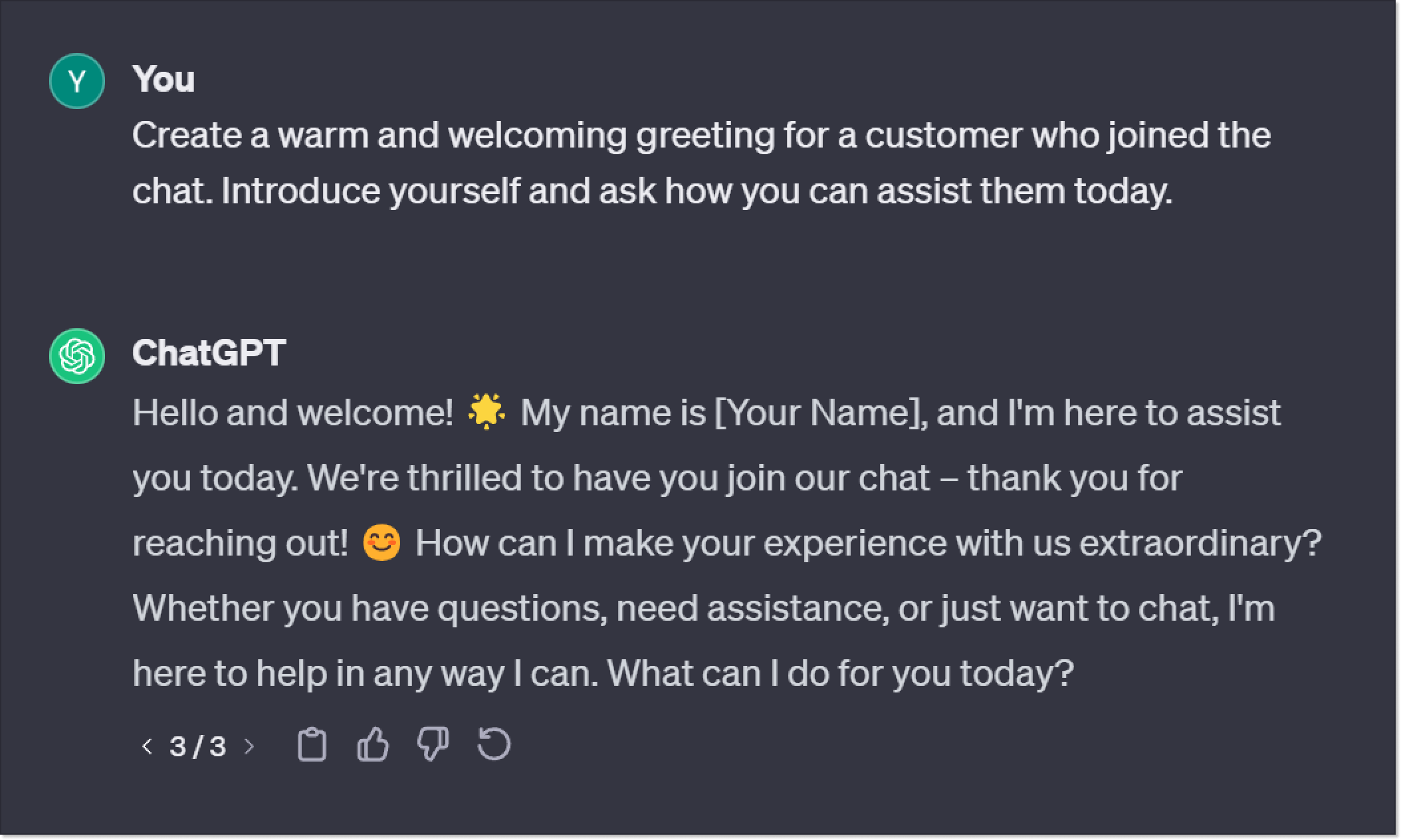
FAQs simplified
Your customers often have common questions. How do you ensure that ChatGPT responds to these queries clearly and concisely? This prompt ensures that your customers receive the latest and most relevant information.
Prompt Example: Consider the question, ‘What are your shipping options?’ Provide correct answers that not only outlines the options but also incorporates any recent updates or changes.

Troubleshooting
Customers encounter issues, and they seek guidance. Empower ChatGPT to troubleshoot common issues and guide customers to solutions.
Prompt Example: Picture a scenario where a customer reports a login issue. Craft a few accurate responses that acknowledge the problem and walk them through the steps to reset their password.
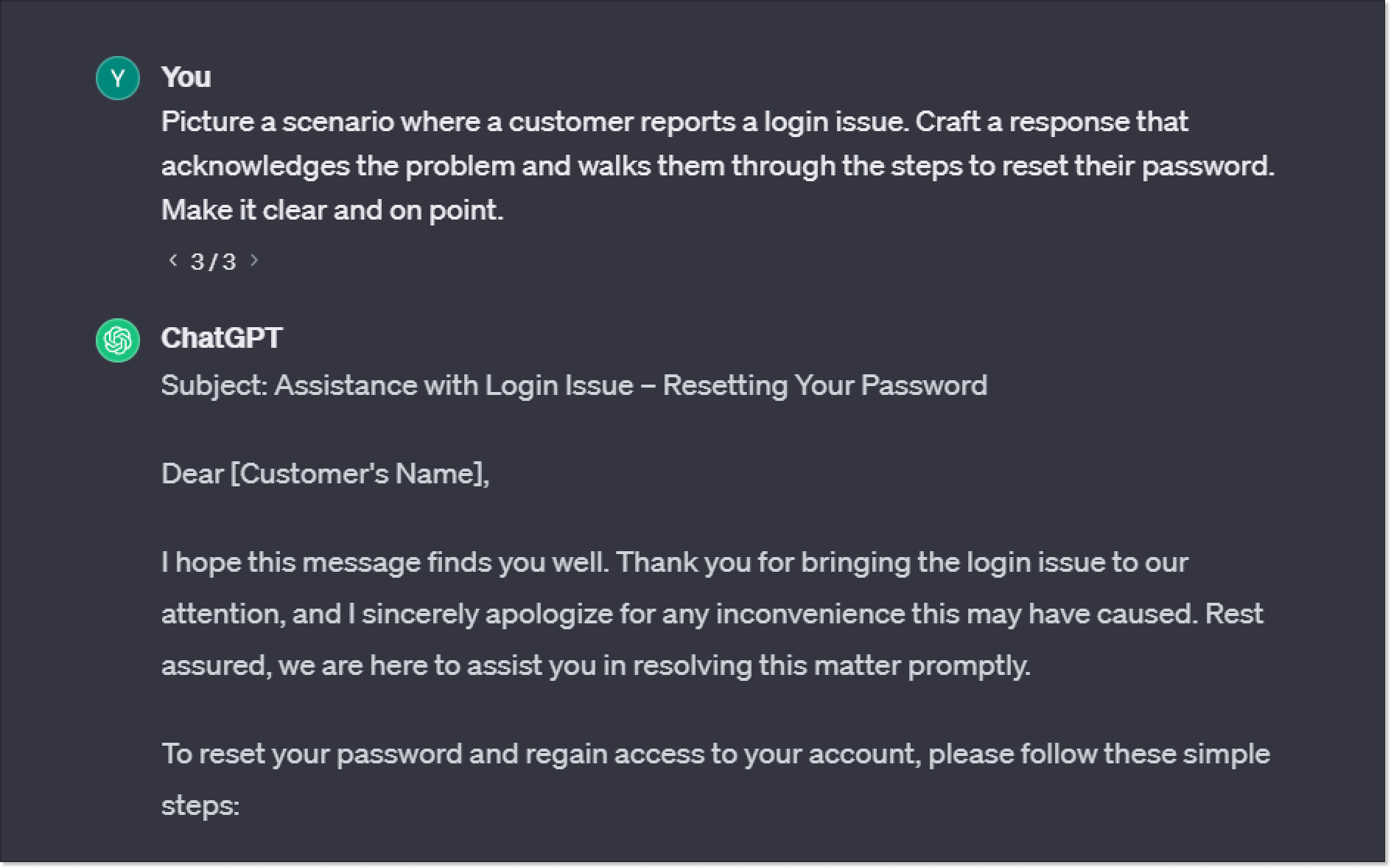
Product knowledge encyclopedia
Customers might have detailed questions about your offerings. ChatGPT can serve as a knowledge base about your products.
Prompt Example: Explain the key features of our premium subscription. Emphasize what sets it apart and why a customer might want to consider an upgrade.

Handling frustrations
Frustrated clients are real. Train ChatGPT to navigate through such interactions with finesse and deep understanding. It has to offer appropriate solutions and turn negative customer service experiences into positive.
Prompt Example: Craft a response to a customer expressing frustration about a delayed delivery. Apologize sincerely, explain the situation, and offer a solution or compensation.
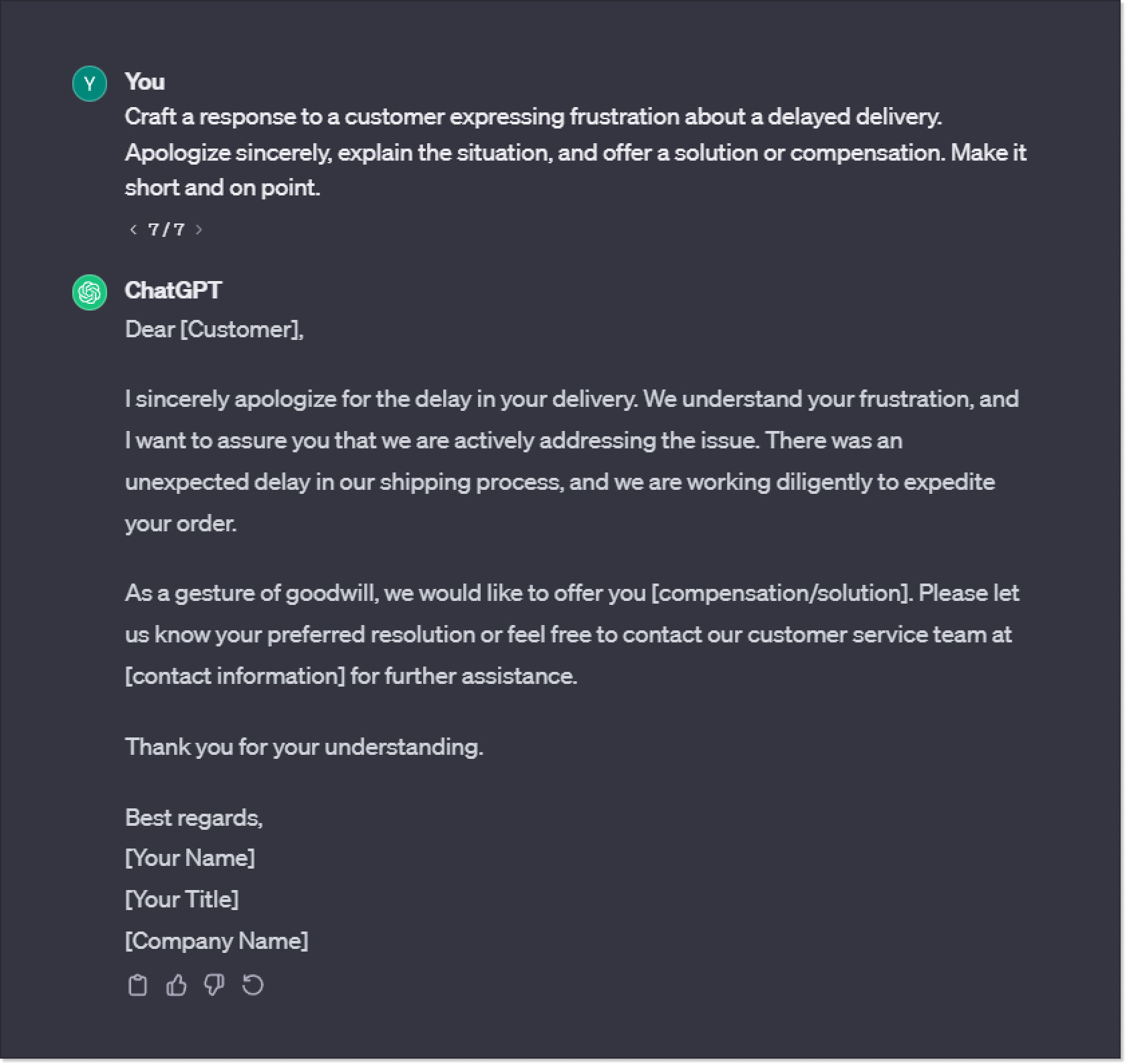
Upselling
How can ChatGPT suggest additional products or services based on a customer’s recent purchase without sounding pushy? Utilize its persuasive skills for gentle upselling and cross-selling.
Prompt Example: Imagine a scenario where a customer has made a purchase. Suggest additional products or services based on a customer’s recent purchase. Make it sound like a good opportunity rather than a pushy sales pitch.

Apology with empathy
Apologies need to be more than just words. Use ChatGPT to deliver heartfelt apologies that resonate with empathy.
Prompt Example: Imagine a situation where there’s a technical glitch during a live event. Draft an apology that acknowledges the issue and assures the customer that it is being addressed, accompanied by a gesture of goodwill.
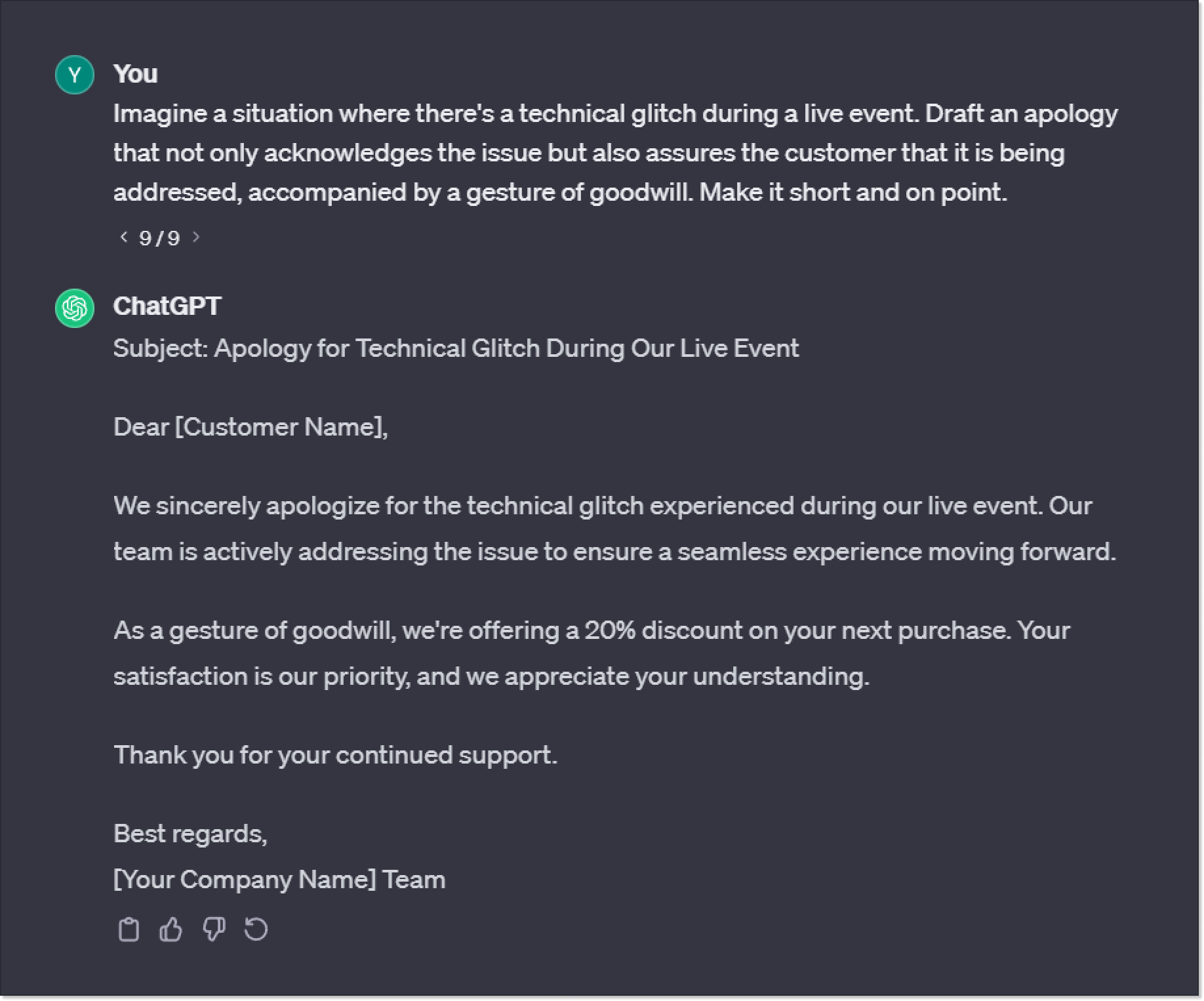
“Thank you” and closing notes
The last impression matters, and ChatGPT can help you craft gracious thank-you notes and compelling closing remarks to leave customers with positive feelings.
Prompt Example: Write a thank-you message for a customer who provided valuable feedback. Express gratitude, mention how their feedback contributes to improvements, and encourage them to reach out with any future concerns.
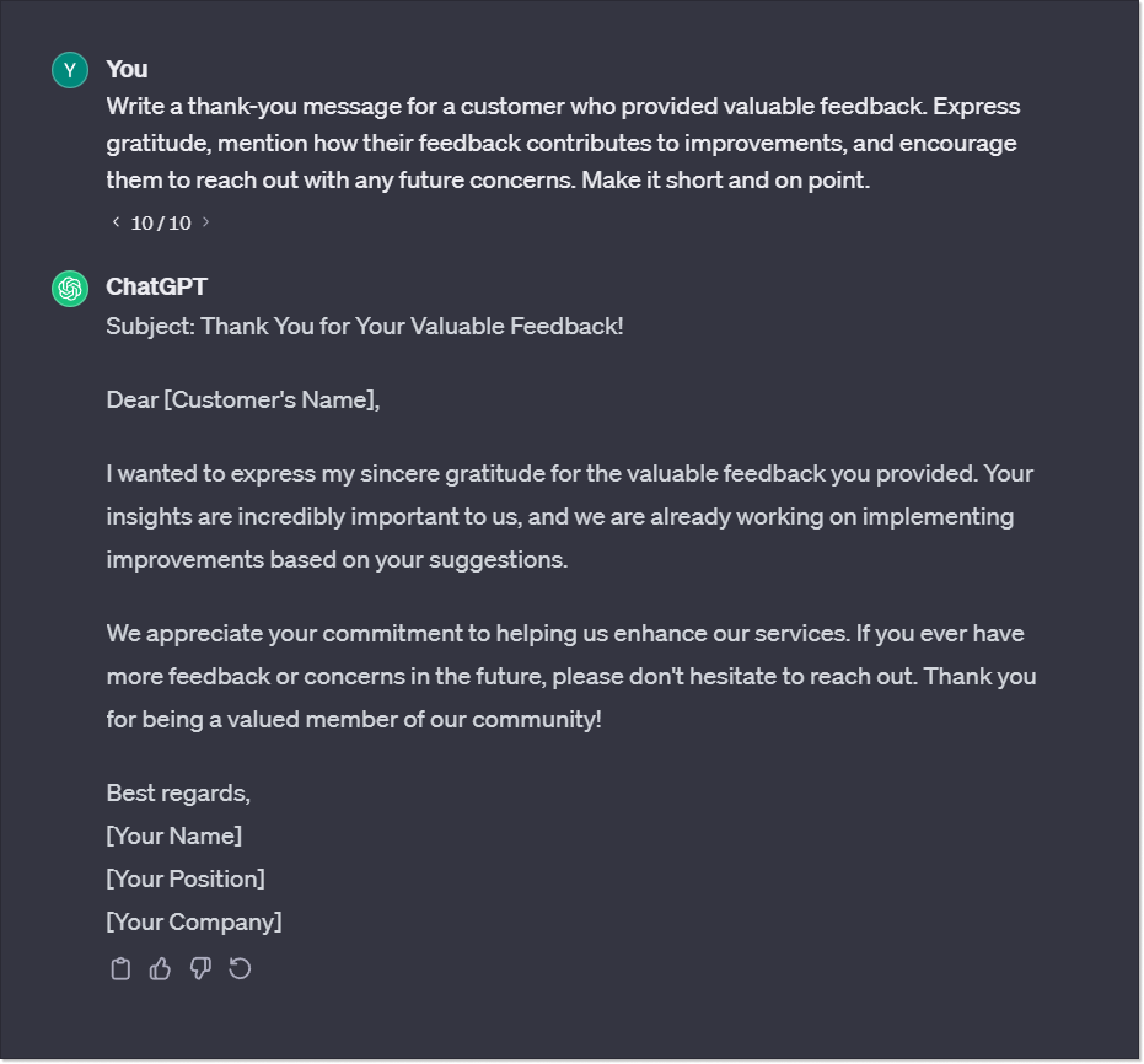
These images are only the examples I made from the basic free ChatGPT version. But with subscription and API, you can do much more relevant content. The key is to iterate and refine every ChatGPT response based on real interactions.
Wrapping it up
Whether you’re a seasoned customer support manager or a business owner looking to streamline interactions, this guide is your secret sauce. Our advice: just do it and automate customer service with ChatGPT and witness it evolve into your ultimate ally in support.
If you’re looking for an AI-powered out-of-the-box solution for your customer communication, try HelpCrunch’s all-in-one platform. We already integrated ChatGPT into a few of our services and continue to work on new features.


